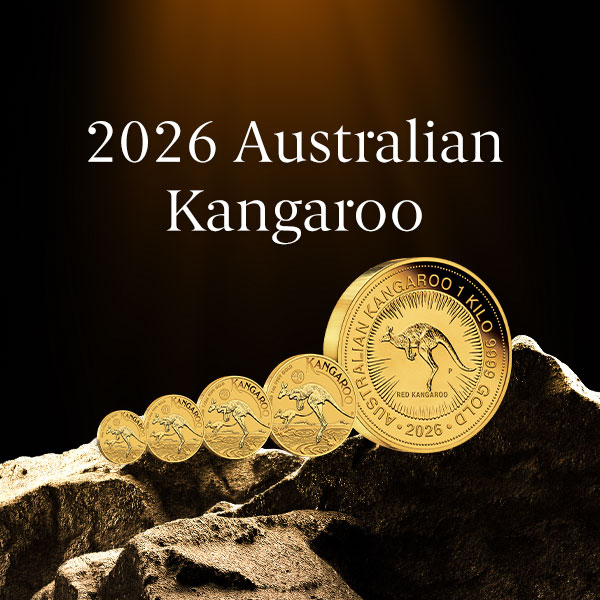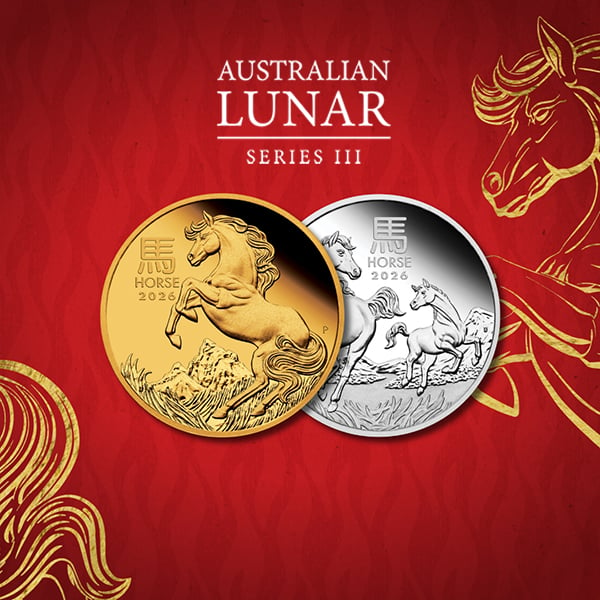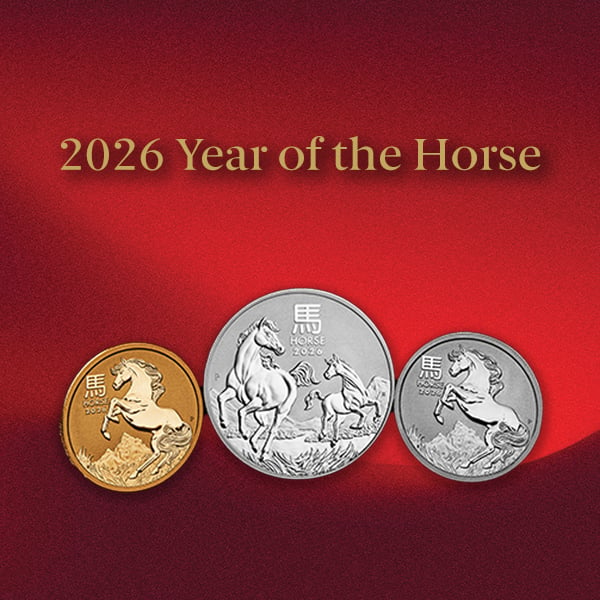How do we make our precious metal coins?
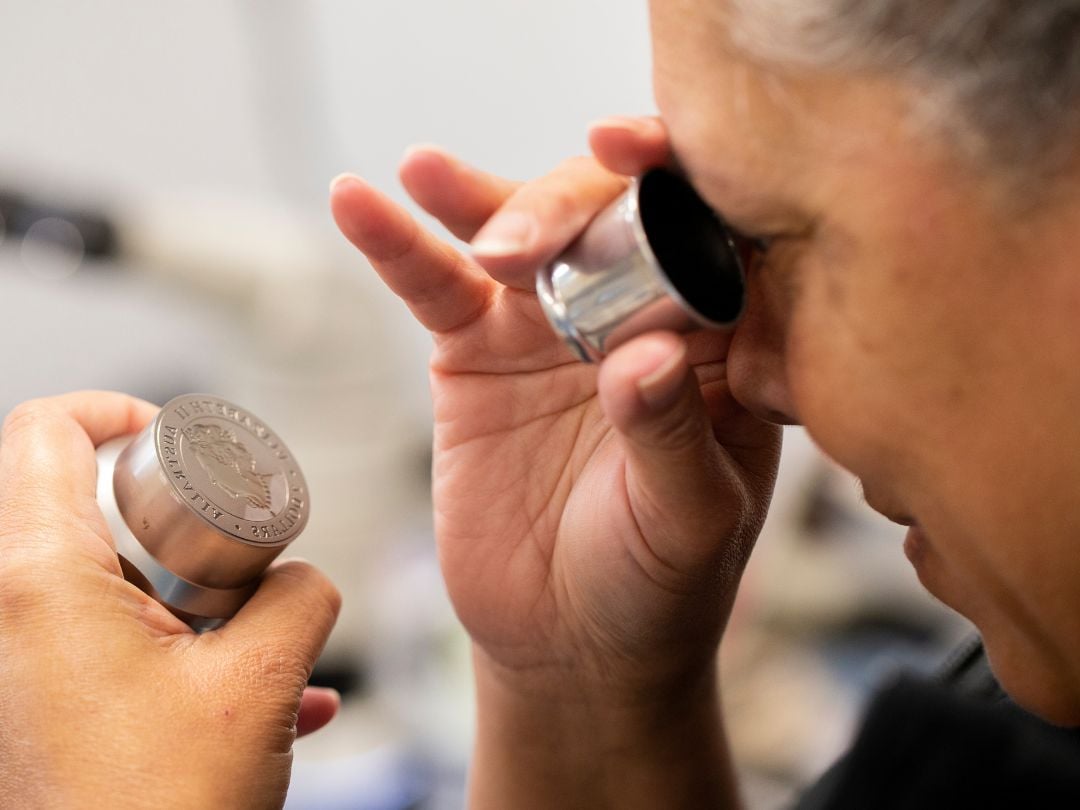
Making coins by stamping blank pieces of metal with official symbols can be traced back to the middle of the sixth century BCE. Under King Croesus, the ancient Anatolian Kingdom of Lydia issued gold coins featuring representations of the royal lion and bull.
Although they are no longer stamped by hand, modern coins rely on the same manufacturing principles – impressing authorised designs onto the surfaces of a metal blank.
In this article we explore the most important steps that our craftsmen and women use to produce exquisite precious metal coins at The Perth Mint.
1. Image design
Designing a coin requires great art. We’re fortunate to have some of Perth’s best graphic designers who have many decades of collective experience in the specialised skills required to design coins.
When you think about it, a coin offers an extremely small canvas on which to express an idea, represent a theme, or commemorate an event. Coin design is also three-dimensional. Technically, it is an example of ‘bas relief’ – a sculpted image with a shallow overall depth. These are just two of the critical factors that our designers are called upon to take into account when preparing what is – hopefully – another successful coin.
In this video, Tash Muhl talks about the art of coin design and the excitement she experiences when she sees her miniature works of art minted on to a coin.
2. Tool and die manufacture
To transfer the three-dimensional design onto the surface of a blank coin, it first needs to be reproduced on a hardened metal die. The image on a die is actually a mirror, or ‘negative’ representation of the design so that when it strikes the blank it leaves a ‘positive’ impression.
Die making is a lengthy and time consuming process in which a digital representation of the artist’s design is created on a computer. With its relief mapped in 3D sculpting software, digital instructions are sent to a computer-controlled milling machine which engraves the design on a master tool.
There are a number of steps for our skilled tool and die making team before we end up with the working die. This precision-made ‘stamp’ must be both flawless and durable so that it leaves a crisp, clear impression with every strike.
This behind-the-scenes video reveals more about the skills involved in the creation of a master tool and dies.
Burnishing blanks
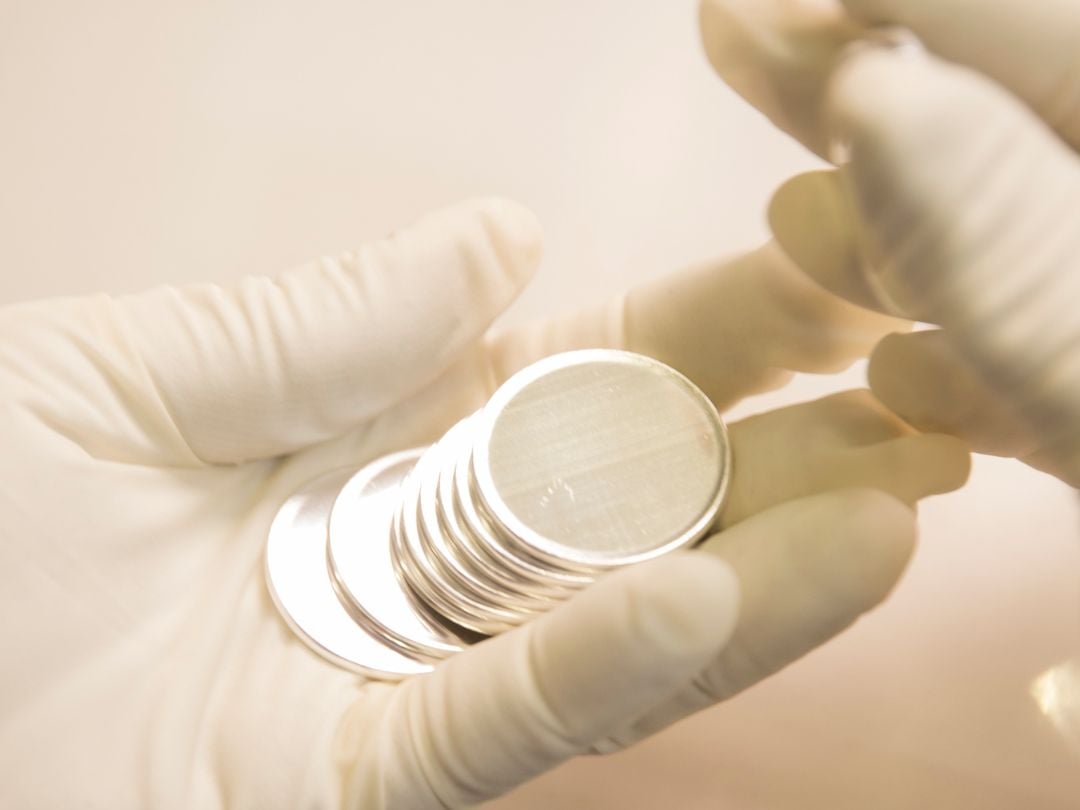
Before any pressing takes place, the talented coining team begin their meticulous work by burnishing the coin blanks. This crucial process involves placing the blanks inside spinning drums, where a unique combination of stainless-steel shot and gentle 'tumbling soap' delicately rolls against the surfaces of the blanks.
The aim is to eliminate any imperfections or blemishes, ensuring the blanks are flawlessly smooth and ready for pressing. Depending on the metal and size of the blanks, the burnishing process can take up to two hours – a testimony to the team's dedication to perfection.
But that's not all – the team goes the extra mile to ensure absolute cleanliness. With techniques like the 'acid wash' and 'ultrasonic wash', they painstakingly remove any contaminants from the blank surfaces. These techniques guarantee supreme cleanliness and a pristine finish.
The final touch is air drying. Only when the burnished blanks are fully dried can they move on to the next stage of the coin creation journey.
4. Pickling blanks
Did you know that The Perth Mint is famous for the precise weight of each coin it produces? In fact, if a precious metal blank is even slightly underweight, it is promptly rejected.
But what about the blanks that end up being slightly overweight? Well, that's where pickling comes in.
Through an acid process, we can dissolve any excess precious metal from these overweight blanks. And the best part? Our state-of-the-art computer controlled pickling plant can treat large numbers of blanks with unparalleled accuracy.
4. Minting blanks
The coining department's core activity is pressing (minting) coins. To do this, the team needs finished blanks, two dies, and a coin press.
Following on from above, dies are metal stamps engraved with the designs for the coin's 'heads' (obverse) and 'tails' (reverse).
The press squeezes the blanks between the two dies, creating designs on both sides of the coin. To prevent the metal from spreading out during the process, a serrated collar is used, which gives the coin its familiar reeded edge.
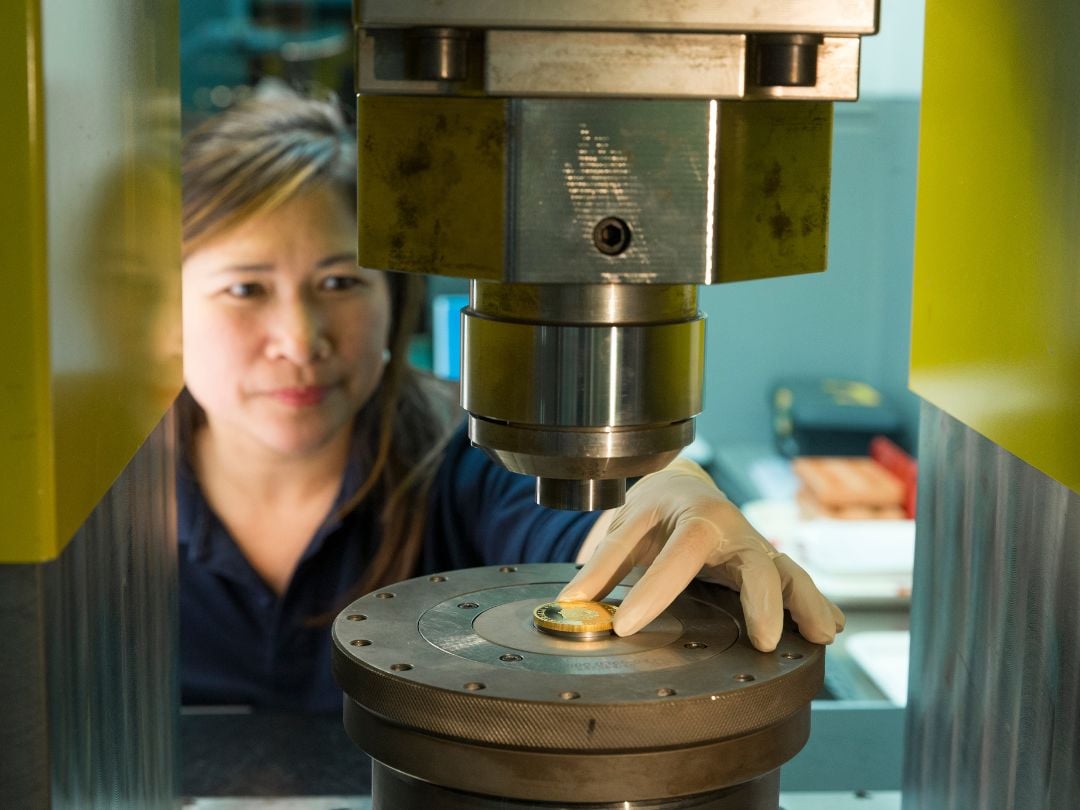
The Perth Mint has a wide variety of coin presses, ranging from fully automated machines that can produce large batches of smaller coins to incredibly powerful presses that can apply tons of pressure. These powerful presses are necessary to make the few 10-kilo coins we release each year.
Operators play a crucial role in quality control, paying close attention to the appearance of the impressions and inspecting for any potential scratches or abnormalities that could result in a rejected coin.
To keep up with the demand for the Mint's wide range of Australian investor and collector releases, our engineers and technicians work around the clock, often requiring the coin presses to be operational 24 hours a day.
5. Coin inspection and packaging
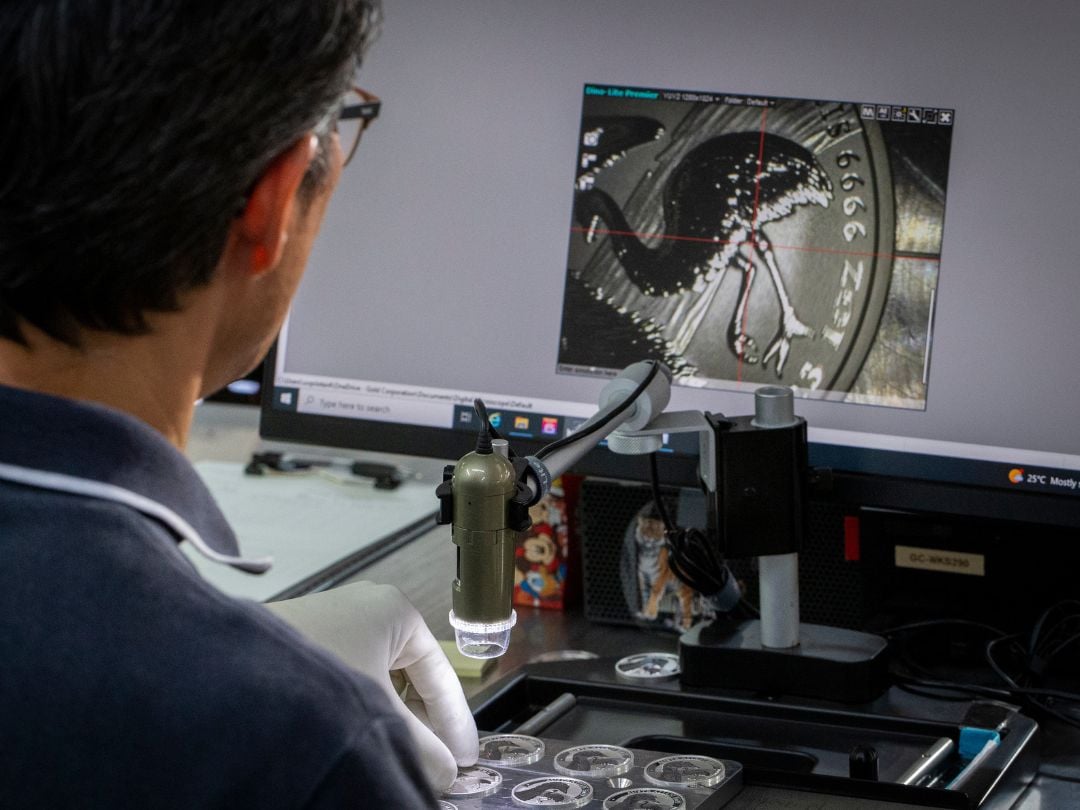
The coining department is responsible for final inspection and packaging of the Mint's finely crafted collector and investor pieces. They follow strict guidelines during the exhaustive visual inspection process and conduct random sampling to ensure accurate weight, diameter, and thickness.
After passing all testing procedures, The Perth Mint's precious metal coins (with a few exceptions) are carefully placed in acrylic capsules to provide perfect protection for a lifetime of enjoyment.
The coining team takes immense pride in knowing that they are responsible for some of the most coveted coin releases in the world.


